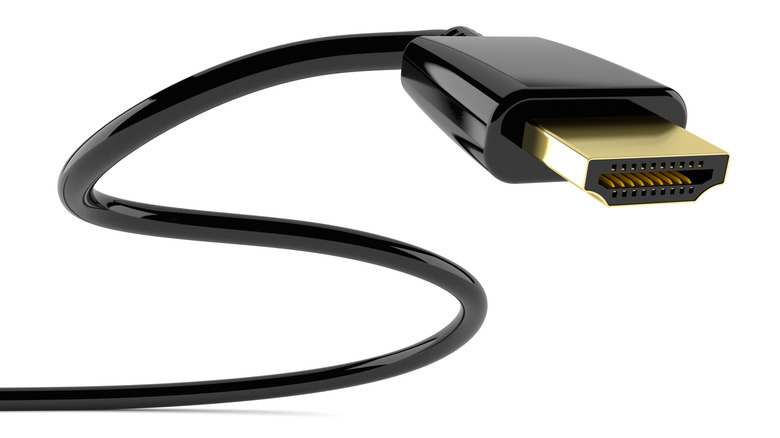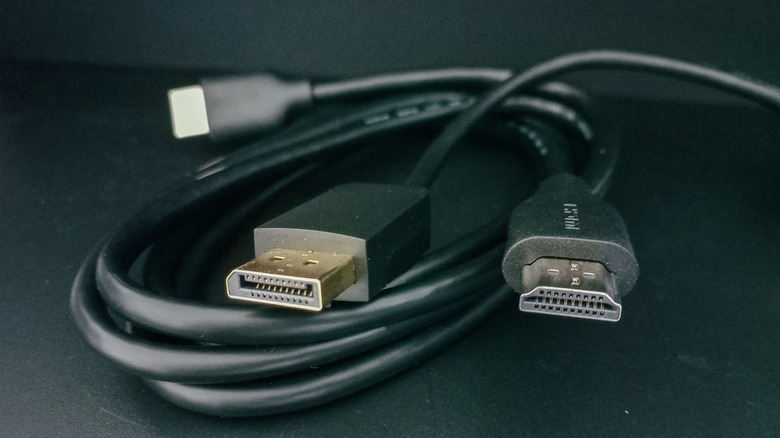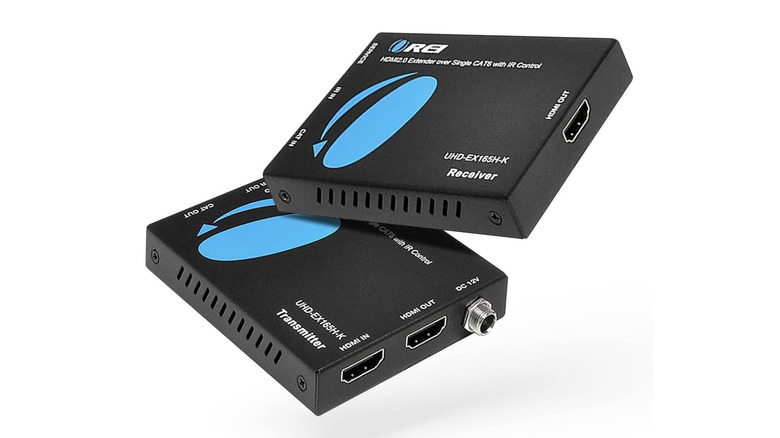How Long Can An HDMI Cable Be Without Causing Quality Loss?
We may receive a commission on purchases made from links.
HDMI is one of the go-to connections for audio and video (AV) equipment in the modern world. Compatible with everything from TVs and AV receivers to sound bars and streaming devices, HDMI cables can be purchased in many different lengths. But while HDMI technology is generally reliable, one recurring concern is how long an HDMI cable can be without causing quality loss.
Unfortunately, the answer is a bit more convoluted than a single number, because HDMI performance — regardless of cable length — is driven by variables like resolution, refresh rate, what materials your HDMI cable uses, and whether the wire is passive or active. There's a "safe bet" range that AV professionals tend to agree on, though, which is 25 to 50 feet.
This isn't to say you're in the danger zone if you purchase a high-quality 60-foot wire, but generally speaking, HDMI cables longer than 50 feet are more prone to signal degradation than shorter wires. Past this point, you're more likely to experience visual abnormalities, audio dropouts, or a complete signal failure.
What causes signal degradation in an HDMI cable?
When HDMI cables work properly, they're a true set-it-and-forget-it connection. But if you're dealing with wires longer than 25 feet, there are a number of obstacles your HDMI cable will face between ports. One of the most common nuisances is something called signal attenuation. As an AV signal travels through your HDMI cable, the picture-sound data can encounter resistance, which is typically caused by electromagnetic interference, and crosstalk from other devices and wires.
Passive HDMI cables — which lack built-in signal boosters or amplifiers — are one of the main culprits behind quality issues. Because they're inexpensive and widely available, they tend to be the go-to choice for most buyers, but the budget-friendly design also makes them more susceptible to signal loss over longer runs. If you absolutely have to go with an HDMI that's longer than 25 feet, you should be shopping for active HDMI cables. Yes, they're going to cost more than most passive HDMI leads, but thanks to built-in amplifiers and signal boosters, these cables can still deliver a solid connection even when stretched 100 feet or more.
Another HDMI obstacle is how much data your cables need to transfer. While higher-bandwidth cables (typically classified as HDMI 2.0 and 2.1) are must-haves for 4K resolution, increased frame rates, and audio-return purposes, (which is what the HDMI ARC port on your smart TV is for), these types of cables are more prone to degradation, even for shorter wire runs.
Closing the signal gap between HDMI and your devices
Not every AV setup can be wired using shorter HDMI cables, especially for situations where you want all your AV components at one end of a space, and your TV mounted at the other. These scenarios may require at least one long HDMI run (maxing out around 100 feet for active HDMI), and you may want even more if you wish to future-proof your media hub. Fortunately, there are a couple of ways to extend your HDMI cables for longer runs.
For starters, you can invest in HDMI extenders. Similar to active HDMI cables, extenders amplify an HDMI signal, but do so by adapting to a different cable type entirely. One of the most common types of extenders is driven by Cat5e/6 technology — a short HDMI cable plugs into one end, while a Cat5e or Cat6 cable is used for the longer wire run (often up to distances of 300 feet or longer) , and converts back to HDMI before it hits your TV.
Fiber optic and coaxial-driven extenders are other cable and adapter options you can consider. Fiber optic is ideal for running an HDMI connection over runs measured in miles, while coaxial is best for extending signals up to 1,000 feet. Alternatively, you can invest in HDMI repeaters, which are devices placed at intervals along a wire run to boost the HDMI signal. As mentioned, you can also ditch passive HDMI in favor of active cables that are designed to span greater distances.
We know what you're thinking: Are wireless HDMI kits an option? This is undoubtedly attractive on the surface, but in some cases, even the best wireless HDMI transmitters can be as susceptible to signal degradation as a long but cheaply-made passive HDMI cable.


